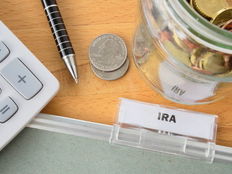
When an investor thinks of municipal bonds, the first thing that comes to mind is tax-free income.
Unlike typical taxable bonds like corporate or Treasury bonds, whose interest is taxed, most municipal bond issuers incentivize investors by having any interest paid be free of taxation. As appealing as tax-free income is, however, it may not be the correct investment choice based on an investor’s overall financial plan.
Traditional and Roth IRAs
One of the most important parts of any financial plan is to properly utilize tax-deferred retirement accounts, like traditional or Roth IRAs. An IRA, or Individual Retirement Account, is a tax-deferred savings account that allows individuals to save for their own retirement. Traditional IRAs allow a 2017 maximum contribution of $5,500 per year, with an extra $1,000 catch-up contribution for individuals older than 50. These contributions are also tax-deductible, depending on the contributor’s taxable filing status, modified adjusted gross income and if they are covered by an employer’s retirement plan. The idea behind using an IRA for retirement funds is to effectively pay taxes during retirement, when the investor is ideally in a lower tax bracket than they are when they contributed.
Another type of IRA that has been growing in popularity is the Roth IRA. This type of IRA is also tax-deferred but contributions are not tax deductible. The benefit of a Roth is that when withdrawals are made during retirement, it is completely tax free, whereas withdrawals from a traditional IRA are taxed as ordinary income. The contributions amounts are the same as that of a traditional IRA but the only contribution eligibility requirement is based on modified adjusted gross income.
Tax-Equivalent Yield
One of the ways bond investors calculate the potential interest a municipal bond will generate is to use the tax-equivalent yield. This is a great way to compare the yield of a tax-free bond to the yield of a taxable bond, which is especially important to investors in higher-income tax brackets. For example, let’s say that an investor in the 35% tax bracket is deciding to invest in either a Florida municipal bond that is paying 2.4% or a corporate bond that is yielding 3%. When running the calculations, the tax-equivalent yield of the municipal bond is 3.69% and is therefore greater than the 3% corporate bond.
Keep our glossary of municipal bond terminologies handy to familiarize yourself with different concepts commonly used by municipal investors.
Municipal Bonds in IRAs
With tax-free municipal bonds having no taxes on interest payments, does it make sense to own them in a tax-deferred IRA? In most cases, no, but there are a few exceptions. Municipal bonds are considered their own asset class and sometimes they do not act in unison with the taxable bond market. If investors see an opportunity for bond price appreciation or favorable tax-equivalent yields, than owning muni bonds may make sense.
The more popular exception to owning municipal bonds in an IRA is when the municipal bond is taxable. A taxable municipal bond is usually issued by a local government, such as a city or county, to finance a project or activity that does not provide a major benefit to the public. Typically, these taxable issues offer a much higher rate than their tax-free counterpart, since the tax-free incentive is no longer available. These bonds also may have a higher yield than corporate bonds with a similar maturity and credit quality. An example of taxable muni bonds is the Build America Bonds, which were issued in 2009 and helped provide much-needed infrastructure funding to local governments after the financial crisis.
The final reason why it might make sense for an investor to own municipal bonds in an IRA is if the bond and investor are subject to AMT, or the alternative minimum tax. The AMT is an additional tax that is paid on top of income tax, usually earmarked for high-income earners. Some municipal bonds are considered tax-free but may still be subject to the AMT. In this scenario, an AMT municipal bond may be a good choice for an IRA.
Proper Asset Allocation
One of the first things any investor should do is to establish a proper asset allocation given their particular risk tolerance, goals and current financial status. Having a proper asset allocation will also help investors determine the most suitable investments in a diversified manner so that there is an acceptable risk-versus-return measure. Either way, it is very important that investors do proper due diligence or consult a financial professional when selecting investments for their own investment portfolios.
Check out the different ways to invest in muni bonds to stay up to date with current investment strategies.
The Bottom Line
Using municipal bonds in an IRA may make some sense for certain investors, but most likely only when using taxable or muni bonds that are subject to AMT. There are some rare cases where a municipal bond’s tax-equivalent yield is greater than a comparable taxable bond, which would be another time to invest using IRA funds. However, it is more common for municipal bonds to be held in non-qualified or taxable accounts so they can take full advantage of the tax-free interest that is generated.






